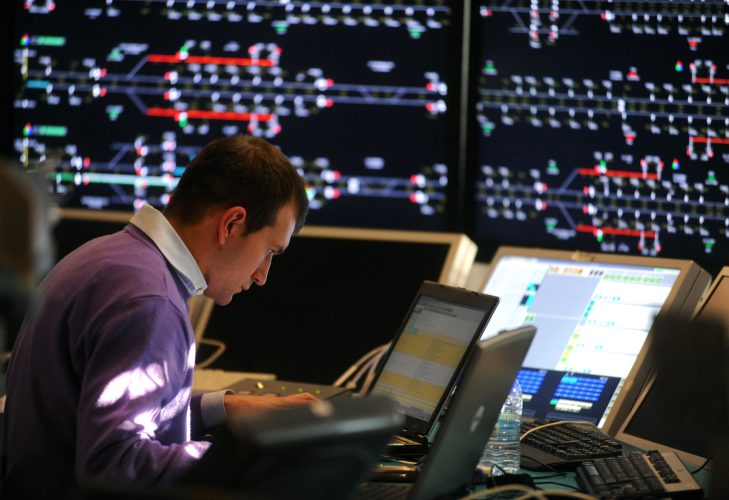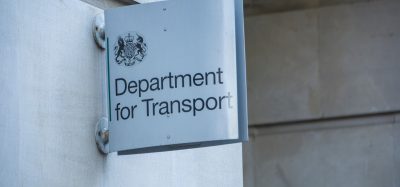A retrospective perspective: Has the European railway community learned from over a quarter of a century of ETRMS development?
Posted: 5 May 2025 | Simon Fletcher | No comments yet
How often is it possible to hear people wistfully remembering the old ways, the so-called ‘glory days’ and lamenting that ‘it was all so much better when…’? This is usually as a result of having engaged in a widely enjoyed pastime of looking back over the shoulder and gazing longingly into the past.


That’s not to say that that is a total no-no. It is possible to agree that taking a look in the so-called rear-view mirror from time to time and being reminded of what was done (or perhaps not done) by predecessors, is a managerial strength.
However, this should not become a preoccupation either and certainly no looking through rose-tinted glasses or the shedding of tears for those past times. But it is true to say that there have been lessons learned over the past 200 years, and it is those lessons which should be recalled. There must be no repetition of historical errors or attempts to reinvent the wheel but rather an engagement in some unashamed cherry-picking of the best bits.
The world is entering a complex period with conflicts of many types and on many fronts. Funds are being diverted to the strengthening of defences, meaning that what is left has to be spread more thinly. The railway community, far from creating yet more battles, needs to be collectively plotting a way forward and, where needed, having tough and critical discussions and reaching well-informed, cost-effective strategic decisions on a range of big picture topics.
There must be no repetition of historical errors or attempts to reinvent the wheel but rather an engagement in some unashamed cherry-picking of the best bits.
Of course, no one is perfect and certainly no one is omnipotent. The approach that is taken must, for the sake of judicious spending of investment capital and for the creation of net performance gains, be on a fully business-driven path and one that is taken for the whole railway system and not just for one part of it.
Taking another quick peek over the shoulder, it is not difficult to see a number of barriers to being able to get things done. The railways are often criticised for being slow, that everything takes too much time but look at the structure, at the number of organisations and stakeholders involved. Is it any wonder that things take so much time to permeate through all the layers? Couple that to the regulatory and/or financial barriers which stand in the way of progress, or the lack of political willingness because one body or another wants to be the top dog, then is it any wonder that things take so long?
There must be lessons drawn from the past, these barriers must be addressed if the railways are to be smart, sharp and solid, so that the tag of being the least polluting form of transport can be retained and built upon. The railways collectively must, as a coalition of willing partners, ensure that those barriers are overcome to reach a really competitive and sustainable transport system.
Time is of the essence, competing modes are not going to wait around and it must always be borne in mind that money is going to become even tighter.
There should, by now, be full awareness of the time pressure regarding the need to migrate from GSM-R to FRMCS but that is because the provision of elements beyond the direct control of the railway community is the catalyst. The 2G transmission network used by GSM-R will be switched off very soon. 5G is the replacement and GSM-R cannot use it.
Taking a closer look at ETCS, this is an issue which is wholly within the control of the railway community, or at least it should be. Another peek over the shoulder will provide the evidence that this leviathan has been under development for well over a quarter of a century and still it is a long way from network-wide application. There have been numerous version releases, masterplans, action and work plans, Memoranda of Understanding etc but is it possible to say, hand on heart, say that there is system stability?
There have of course been some wonderful ETCS successes. Fitment has been made on a number of lines, and more are in the pipeline, but can it be said that there is system compatibility? Most of the fitment that has been undertaken has been planned and implemented on a national basis with, at least in the earlier days, little or no apparent joined up thinking.


There have been relatively recent applications which were not compatible across the state border from one country to the next resulting in huge operational and performance issues. It can also be suggested that in certain cases fitment has been undertaken ‘because that is what is required’ but without really understanding the bigger picture. And then there are other plans where the fitting of an entire network has been announced because simply fitting to one or two corridors does not make any economic or operational sense. ETCS was designed to eradicate the patchwork of signalling systems across Europe. This haphazard fitting is in reality creating a new patchwork, albeit a bit more up to date.
If the railways are going to improve and reach competitive advantage over other modes, then there is a collective need to act, regroup, corral the thinking, merge ideas, and somehow rethink the way in which the railways can achieve a common set of objectives supported by a sound, single deployment plan.
Getting system stability for ETCS, with the efforts of all the stakeholders harnessed and where there is collective achievement of network-wide implementation, has to be the utopic goal. After all, throughout the seemingly endless years of development of ETCS, there has been tacit agreement that having such a key enabler is a prerequisite for tomorrow’s interoperable railway network.
It also goes without saying that ETCS will significantly contribute to system safety, greatly improve the operational performance of the network and even be seen as not only an improver of the already solid environmental credentials of the railways but also as a significant catalyst for the railways in the quest towards achieving a digital railway network.
The key of course, and the raison d’etre of all railway professionals, is to ensure that the users of the system are able to seamlessly get from A to B – that’s passengers and freight forwarders/shippers of course. Making railways the users’ preferred mode of land transport is central to this ideal. That makes both economic and political sense.
It is clear that the technological advancements of ETCS will do all of this but there is still a long way to go before the end goal even after over a quarter of a century of development. And there is still no harmonious approach.
Having reached what most stakeholders thought was a stable ETCS baseline at version 3.4, another curveball was introduced. GSM-R is rapidly becoming obsolete and needs to be replaced with FRMCS, its smarter, new-generation cousin. But it is how FRMCS dovetails with ETCS that is now prompting much angst amongst many stakeholders. There is the very laudable ambition of certain stakeholders to introduce a new baseline, 3.6, which has the two aspects integrated and which will enhance the capabilities of ETCS. But is that the right thing to do right now? Some will of course argue that it is, but has the economic impact been properly understood?
Before there is any giant leap in this direction, the full impact (technically and operationally) of both doing and not making this transition needs to be fully considered. The funding for such a move must be in place and all the stakeholders supportive of the final decision.
Central to this is that some stakeholders feel that not only are the goal posts moving but the rules of the game could be changing too, introducing yet more cost and time.
Taking another look in the rear-view mirror will however show that there have been baseline changes in the past. Some will see this as positive as the railways know how to adapt to such changes. But is it possible to actually hand on heart say that the day can be seen when network-wide implementation will be achieved if the sands keep shifting?
The changes introduced over the years, and which are still being proposed, far from bringing stability or system compatibility, only bring more confusion, concerns over investment funding, and also doubts about the ability to fit this equipment to the operational railway and to the trains without causing major upheaval.
It is time that a significant line be drawn in the sand, ensure that the target is no longer moving, that the goal posts are firmly planted and, whilst we’re at it, take another look in the rear-view mirror.
Learn from the lessons of the past
How many variations have there been? How many versions of the regulatory framework? Now is the time (indeed beyond time) to call for stability, consistency and a unified and unique approach with decisions taken at senior railway community level, before the cost of fitting (and retrofitting) ETCS starts to outweigh the benefits.
Of course, it would be churlish to openly oppose the introduction of new functionality or technology, choosing and implementing the right ones at the right price will naturally be a solid basis for the digital railway of tomorrow. There needs to be a focus on the “need to have” rather than a tendency to “nice to have” and certainly no advocation of one way or another just for the sake of scoring points or to have a name in lights.
So, perhaps it is time when the core focus must be on having a boringly reliable railway that is safe and at the right price for the provider and the user. That’s how the railways encourage the users to consider railways as their preferred choice of land transportation.
In order to accelerate implementation and to keep the all-important costs down, is it not somehow possible for ETCS fitment to be undertaken using baseline 3.4 alongside fitment of FRMCS rather than as an integrated element?
The collective approach must be one of pragmatism and with a firm eye on the cost of the system. An over insistence on changing regulatory requirements (more shifting sands) and for the railway community to be slaves to regulations such as the planned 2029 version of the CCS TSI should be flipped on its head. It would be far better and indeed a thoroughly laudable approach if the regulations were to become the flexible friend of the railway community and consider encouraging not only pragmatism but that they advocate the joined-up search for stability. 2029 is after-all just a number.
It is surely in the best interests of all the key stakeholders from the Commission to the Fabricator on the floor of the workshop, to keep the pipeline of fitment flowing and reduce the stress levels and financial burden on not only the key stakeholders but also the tax paying citizens of the EU.
This is certainly not the time to be introducing yet more change or piling on yet more cost and uncertainty. There is already a finite limit to the resources available and, as discussed earlier, that is likely to be further depleted. There are already rumours abounding that the Connecting Europe Facility, something that could be thought of as a natural source of investment for ETCS, is being questioned. So that means that the next Multiannual Financial Framework (MFF) – otherwise known as the EU budget – must reflect the importance of getting the key digital enablers of ETCS and FRMCS done.
It is very easy through this article to be turning the spotlight on these things, but it is time that there is a collective look at how we are doing things. How are the decisions being made and by whom and for what reason? How are such decisions justified?
‘Times, they are a-changing’, sang Bob Dylan and how right he was.
That was in 1964, we know that because the rear-view mirror is able to portray that. A further look will also show that often priorities in the railways have been pulled in every which way, often because the stakeholder shouting the loudest has got their way. Their purpose has been served but at what cost? Often the system has been destabilised, the equilibrium changed, weaknesses start to appear, efficiency suffers, and the competing modes are rubbing their hands with glee. It is imperative that lessons are learned from those faults of the past, understand the implications, vow not to repeat them, ensure that, as a railway community, it is possible to take collective intelligent, relevant, justifiable decisions. Such decisions have only one thing at their heart and that is the continued evolution not of an individual, or a company but of the railway system. The process must be rationalised, it must be tolerant, flexible and, above all, business focused.
All that said, it is without question that full deployment of ETCS will make the railways way more competitive. Not only will it eliminate the patchwork of signalling systems that there are around Europe and therefore improve reliability and performance, but it will reduce the cost of fitment and maintenance as the economies of scale can be shared with all the Suppliers, Infrastructure Managers and Vehicle Owners (RUs and ROSCOs).
It is evident that it makes operational sense to get ETCS done, it also makes economic sense too. But equally, it presupposes that:
- There is a stable baseline which all stakeholders can endorse. No more shifting sands and certainly no more individual interpretations. A baseline means a baseline for everyone,
- That there are realistic, aligned, well consulted fitment plans. All the key stakeholders must be involved. However, these plans cannot be allowed to prevail in perpetuity, hence the need for the timetable for fitment to be realistic, stable and frequently reviewed. The Work Plan of the European Coordinator for ERTMS, would perhaps be better as a top-level strategy supported by a detailed fully coordinated fitment timeline that shows the annual plans for each Supplier (they need to be able meet demand), Infrastructure Manager for lineside and Vehicle Owner/Railway Undertaking for onboard
- That there is a stable set of costs – no undue expenditure that in effect leads to negative present values for any of the stakeholders. Realism, pragmatism and maturity of decision-making is essential. It should not be the case that any key stakeholder becomes financially depleted before the long-held dream of a unique Europe-wide signal and telecommunication system (without borders) is able to become a reality.
It all comes down to having a solid vision, a broad blueprint to work towards. Without that, one risks having continued drift and a constant rearranging of the ideas. None of that is going to enable the railways to have their share of the transport market at a price which is attractive to the end users.
About the Author
Simon Fletcher is a member of Global Railway Review’s Editorial Council

Stay Connected with Global Railway Review — Subscribe for Free!
Get exclusive access to the latest rail industry insights from Global Railway Review — all tailored to your interests.
✅ Expert-Led Webinars – Gain insights from global industry leaders
✅ Weekly News & Reports – Rail project updates, thought leadership, and exclusive interviews
✅ Partner Innovations – Discover cutting-edge rail technologies
✅ Print/Digital Magazine – Enjoy two in-depth issues per year, packed with expert content
Choose the updates that matter most to you. Sign up now to stay informed, inspired, and connected — all for free!
Thank you for being part of our community. Let’s keep shaping the future of rail together!








